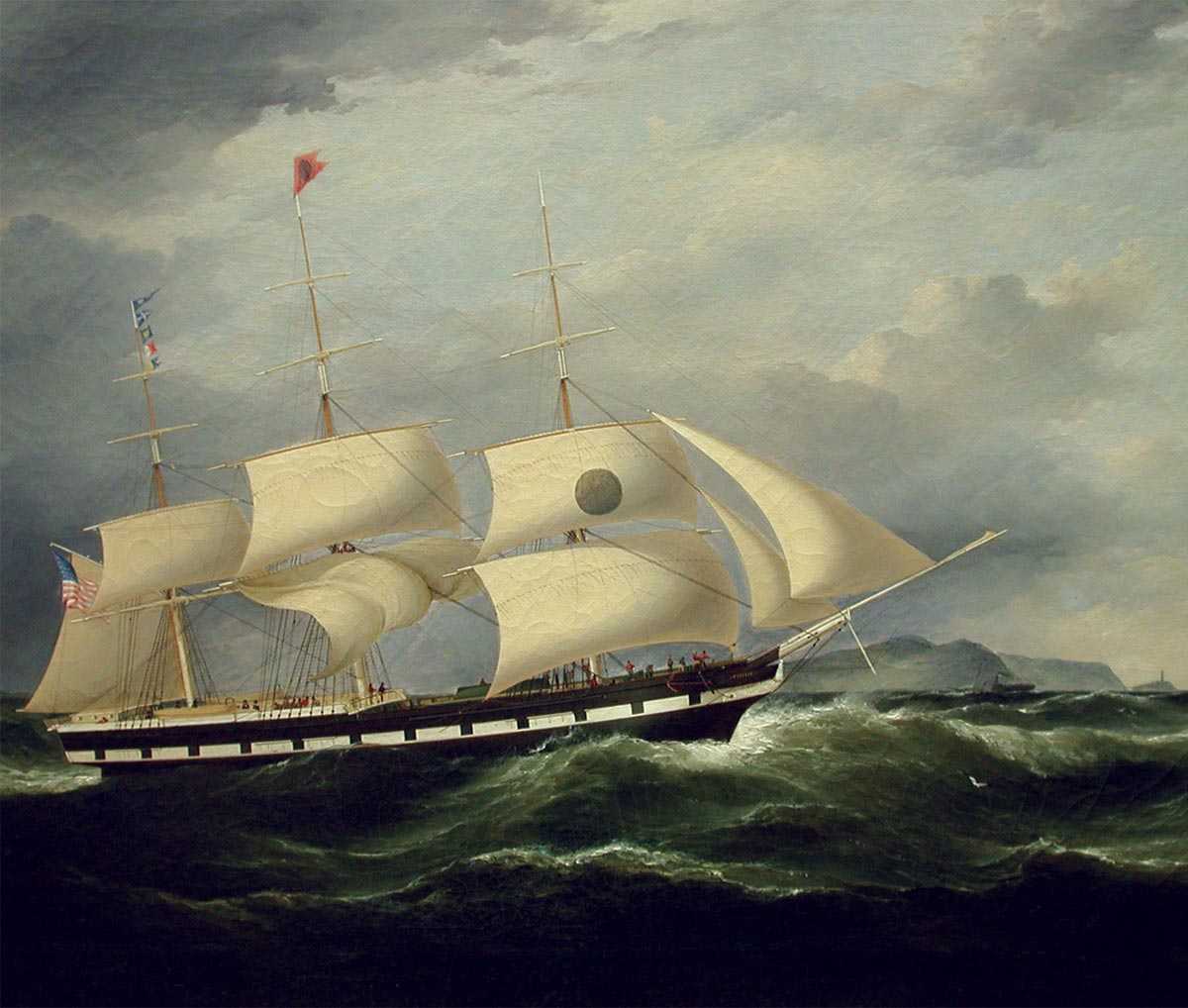The story of the Black Ball Line
In 1817, a group of New York textile merchants led by a Quaker named Jeremiah Thompson revolutionized transatlantic shipping. At the time, ships that were ready to make the crossing advertised their availability for freight and passengers. Captains would then wait until their holds and staterooms were full before embarking.
Recognizing the inconvenience of this system to merchants and passengers alike, Thompson and his partners created the first packet line consisting of not one but four ships.
 more
moreThis enabled them to provide their customers with regularly scheduled monthly departures between New York and Liverpool. It was an immediate success.
Each of the ships flew the same flag: a black ball set on a red background. So distinctive was this symbol that the company became known as the Black Ball Line. Thompson had not only revolutionized transatlantic shipping; he had created a company that embodied the essence of brand identity long before such a concept had even been proposed.
 more
moreSo strong was his brand that in 1851, a group out of Liverpool named James Baines & Co. co-opted both the name and the flag, and entered in direct competition with the original Black Ball Line. The company protested this identity theft to no avail. Today it is far easier to protect an identity than to create one worth protecting. Elegant, powerful and easily-recognizable. These are the characteristics of the Black Ball Brand. Perhaps it is Thompson who should be remembered as the father of brand identity.
Black Ball Line packet ship Fidelia,
oil painting by Samuel Walters (1811-1882), courtesy Francis Russell Hart Nautical Museum, MIT, Cambridge, MA.
 again
again



















































































